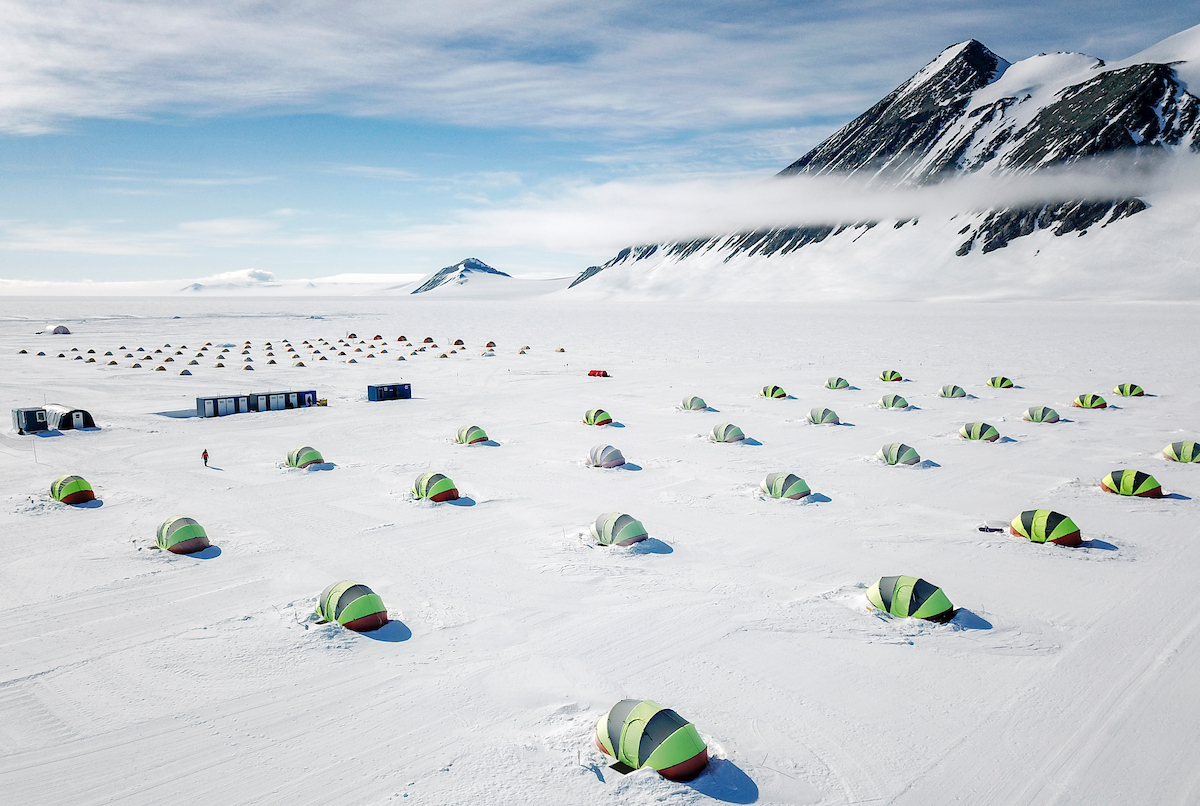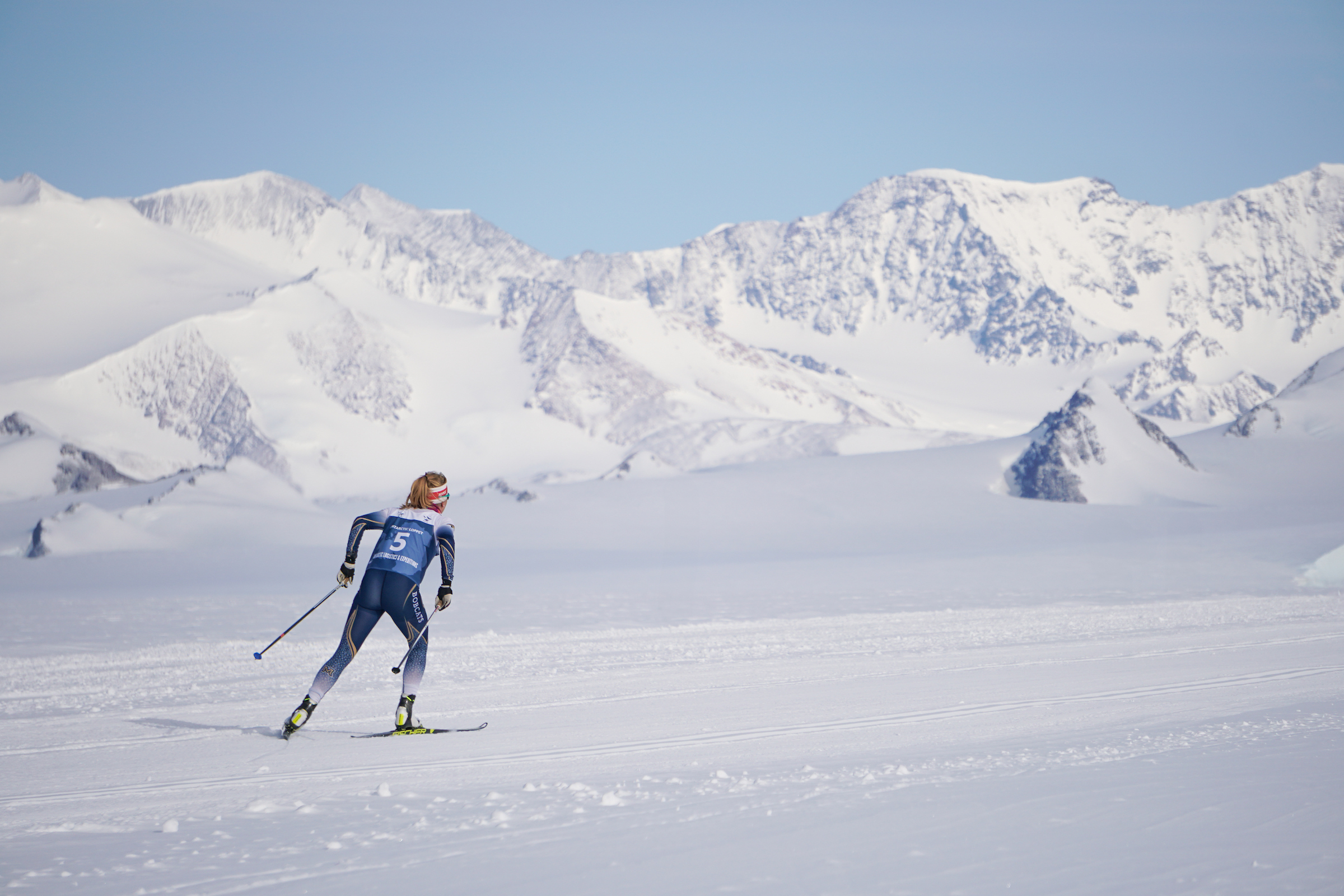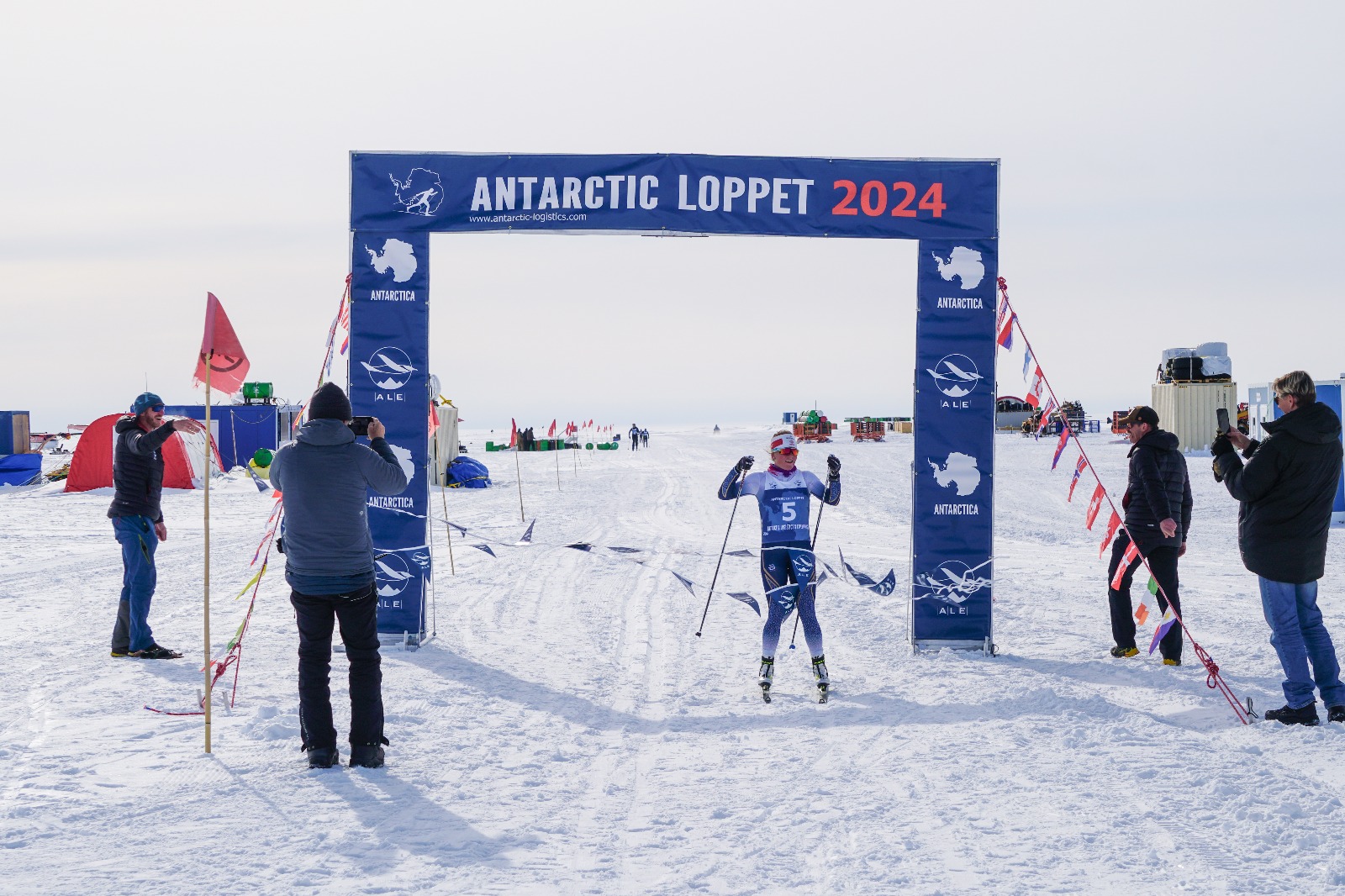Cross-country skiing played a key role in early Antarctic exploration: one aspect of Roald Amundsen’s 1911 South Pole success involved cross-country skiing. Since then, skiing has become an established form of transportation for polar adventurers. The Antarctic Loppet honors this legacy, rewarding skiers willing to brave the unknown with jaw-dropping vistas, untouched snow, and stories that will last a lifetime. With constantly shifting weather, a 24-hour sun, and one of the most remote courses in the world, preparing for this race takes more than endurance, it takes smart planning and the spirit of an adventurer. Whether you’re chasing a personal best or aiming to ski in one of the world’s most unique courses, here are some training tips for this year’s event.

What to expect: Union Glacier Camp in Antarctica
Union Glacier will be your Antarctic home away from home. With cozy Clam Shell tents for quality sleep, professionally cooked meals that satisfy your nutritional needs, the inclusivity of the whole camp experience allows you to stay focused on your goals while staying comfortable in a new environment. Instead of showing up to simply ski, staying at Union Glacier removes the pressure of organizing logistics, and provides you with the unique opportunity to experience Antarctica. Whether it’s hearing history lectures about explorers of old or taking a half-day to explore the stunning local scenery, there are many chances to create lasting memories alongside your athletic accomplishment.
3 Months out: Build a solid aerobic base.
To beat the fatigue of a long-distance event in an Antarctic environment, you need a robust endurance foundation. This means:
Long, steady sessions: Aim for one long ski or roller-ski session per week, gradually increasing from 90 minutes to 3+ hours. Focus on time-on-feet rather than speed. Your body needs to adapt to prolonged effort. If using a performance or heart-rate tracking device, “Zone 2” is the effort you should be going for. If possible, train on snow or use roller skis on hilly terrain to mimic the undulating Antarctic course. Together, these exercises prime your body to handle longer endurance and begin the process of building necessary muscle groups to be more efficient.
Practice Nutrition & Hydration: Fueling in the cold is tricky. Your body burns more calories, and given Antarctica is one of the driest environments, hydration is even more important. Use long workouts to trial energy gels, bars, and warm drinks. Insulated bottles or hydration packs with anti-freeze tubing are essential and figuring out how to carry them with you is also a technique. Begin fueling within the first 30 minutes of training and continue every 20–30 minutes. Keeping track of how certain products make you feel while exercising can help pinpoint your ideal nutrition, so keeping a log of “Fuel vs. Effect” can be helpful to reference throughout your training.
2 Months out: Practice performance.
Adding Intensity trains the body to use its energy stores efficiently. You’ll need to push your VO₂ max and lactate threshold to handle the climbs and surges on the course.
Intervals: Include one interval session per week. Try 5×5 minutes at high intensity with equal rest, or pyramid-style intervals (e.g., 3-5-7-5-3 minutes). Whether that’s a moderate speed for 5 minutes, with a 5-minute rest, 5 times, or more rest and less time moving, either way trains the body to be more efficient. Ski or run at a pace just below your lactate threshold for 45–60 minutes. These sessions build stamina without overwhelming your system. Hill repeats can be especially helpful. Short, steep climbs repeated 6–10 times will build leg strength and simulate Antarctic ascents.
Strength & Core Training: Cold weather magnifies fatigue and poor technique. Strength training helps you stay efficient and injury-free.
Core focus (Twice a week): Side-planks, bridges with leg extension, and toe-taps on a bar.
Leg power (Once a week): Squats, lunges, and step-ups to build ski-specific strength.
Upper body (Once a week): Tricep dips, shoulder press, pushups.
Train for the Elements: Antarctica’s weather can be unforgiving. Prepare your body and mind by training in cold conditions when possible. Learn how your gear performs and how your body reacts. Practice skiing into headwinds or use resistance tools to simulate drag. Don’t forget to experiment with clothing systems to avoid overheating or freezing mid-race. Layers that keep you warm but also allow heat to escape can be useful if you are aiming for shorter distances. Given the Antarctic climate is both very dry and very cold, you do not want exposed skin, especially if there’s moisture nearby. Logging might also be helpful if you also keep track of the conditions you are training in.
Techniques: Sometimes it’s the little things that can add up to success on the big day. Getting used to adjusting your bindings for maximum speed, practicing double poling, and practicing waxing your skis all combine to create less stress on event day.
1 Month out: Simulate event day
Group Training & Mental Prep: Training with others helps build mental resilience and pacing skills. Practice drafting and pacing with others to simulate race dynamics. Use visualization, mindfulness, or cold plunges to build psychological endurance and prepare the mind for longer sessions. Planning a mock race or time trial in tough conditions can be integral to test your gear, pacing, and mindset.
Final Weeks: Taper & Tune
In the last 2–3 weeks before the race:
Reduce volume: Cut back training to allow recovery but keep intensity with short intervals.
Fine-tune gear: Wax skis for cold conditions, test poles, and finalize your race kit.
Stay active: Light sessions with short bursts keep your body primed without fatigue.
Ready for the Ice
Antarctica is such a stunning and unique location, and to experience the raw beauty and power of Nature at the bottom of the Earth is an experience like none other. The Antarctic Loppet not only allows you to test your skills in a new environment, but to come away from the event with new knowledge about the continent and an appreciation for our natural world. Training for a cross-country ski event in Antarctica is a journey into the unknown. But with a smart plan, consistent effort, and respect for the elements, you’ll be ready to glide across the frozen continent with confidence.